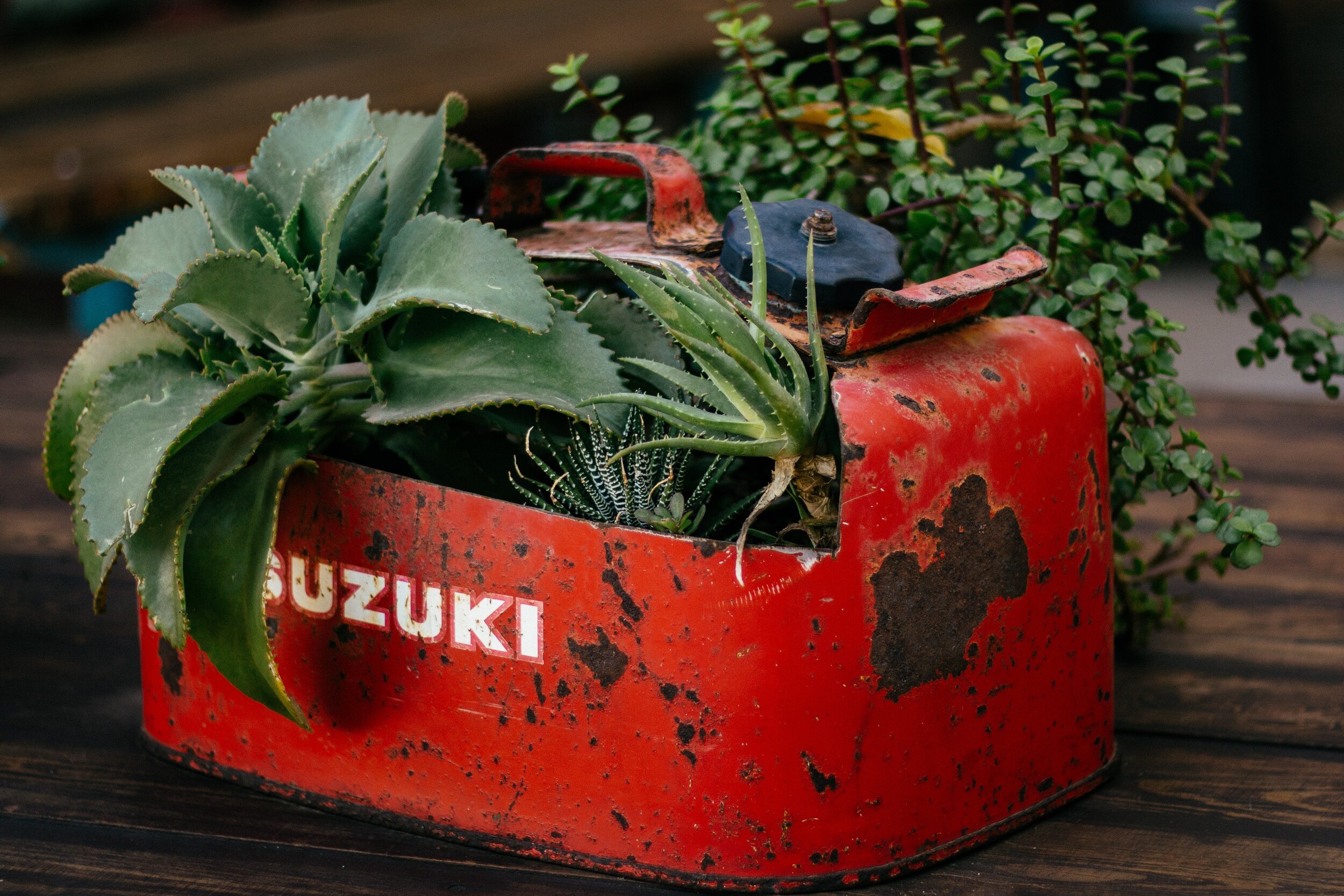Can biofuels help us solve climate change?
Photo by Adolfo Félix
Lately, biofuels are becoming more popular. Even the big players in the field are offering different biofuels, and in some Scandinavian countries the entire fleet of public transport busses is already running on biofuels. But what is biofuel exactly? And can it help solve climate change?
Let’s have a look at the problem of our regular fossil fuels first. Within the current energy transitions there are three popular emissions that we hear about often on the news: nitrogen, particulate matter (SPM) and carbon dioxide (CO2). These bad boys have a harming effect on the environment and human life on earth, but why?
Nitrogen
Approximately 78% of the air around us consists of nitrogen, and is by itself no threat to the environment. Nevertheless, the emissions of our cars and those of certain industries have nitrogen turning into nitrogen oxide (NOx) which has different effects on the environment. It changes the composition of the soil (acidification) and thus changes the biodiversity.
Particulate matter
Most parts in the air are called ‘particulate matter’ (PM10). These are most harming towards humans, and are created by emissions from traffic as well as the ‘wearing off’ from the roads.
Carbon dioxide (CO2)
Carbon dioxide is stored in fossil fuels (petroleum, coal and natural gas) and released when we burn it. Carbon dioxide is necessary for the earth to warm up, unfortunately when using too much, the earth warms up too quickly resulting in the problem of the century: the greenhouse effect.
Biofuels
Being familiar with the problems that fossil fuels create, it’s time to look at biofuels and how they can make a change in a positive direction. Not all biofuels are the same and some production processes are not as sustainable as you would think. There are different types of biofuels including grown fuels (like corn ethanol) which we can use instead of fossil fuels (like petroleum). While biofuels can be any fuel produced from plant material, historically they have been produced from food crops such as corn and soy. Now new technologies are enabling biofuel production from non-edible gases, wood, and other waste material.
One option of biofuel, is HVO - Hydrotreated vegetable oil, which is at least the same or even better quality than today’s diesel fuel. This type of biofuel is made of waste fats or recycled frying oil, or cooking oils such a rape oil or palm oil. Despite the ‘natural’ base of the oils, they have very contrasting impacts on the environment. When HVO is made of palm oil that is not sustainably sourced, the biofuel itself can also not be classified as sustainable. Although, when the HVO is made of waste streams such as the production process of paper, it’s not burning any extra fossil fuels.
To have a clear distinction between the different types of biofuels, the European Union has established a baseline for ‘sustainable produced biofuels’ or ‘advanced biofuels’.
“Advanced Biofuels are those (1) produced from lignocellulosic feedstocks (i.e. agricultural and forestry residues, e.g. wheat straw/corn stover/bagasse, wood based biomass), non-food crops (i.e. grasses, miscanthus, algae), or industrial waste and residue streams, (2) having low CO2 emission or high GHG reduction, and (3) reaching zero or low ILUC impact”
(ETIP Bioenergy, 2019)
Let’s talk actual numbers
Now you know a little more about biofuels, but what does this mean in numbers? For the reduction of both nitrogen and particulate matter in the air, biofuel is a step in the right direction. HVO produces 10-15% less nitrogen and 20-40% less particulate matter.
When using 100% HVO biofuel in replacement of your regular diesel, you can emit up to 89% less CO2 when driving your car. Since the price of HVO is not very cheap, it can also be mixed in with your regular diesel, which while resulting in a smaller decrease of CO2, can already be a small step in the right direction of driving more responsibly.
Last Monday, we (Sea Going Green) partnered up with GoodFuels in order to be able to consult and help our clients to switch to biofuels. The biofuel from Goodfuels is not derived from land that was originally used for agricultural purposes or food products, nor does it involve deforestation to obtain the materials. The biofuel is made from 100% waste originating from e.g. the production process of paper. All the waste and residues are certified by the International Sustainability & Carbon Certification (ISCC) and Roundtable on Sustainable Biomaterial (RSB), thus complying with all greenhouse gas reduction targets for the European Biofuel market (ISCC, 2019).
Let’s all make an impact and #GoGreenForTheBigBlue!
Do you have any questions regarding biofuels, Goodfuels or our services? Contact babet@seagoinggreen.org or ally@seagoinggreen.org and have a look at our services page.
Sources

